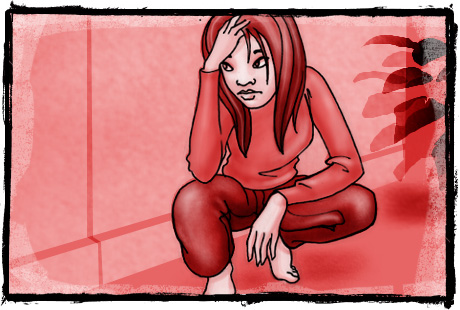
The Sexual transmitted diseases are infections transmitted from person to person during the sexual intercourse. there are around of 24 sexual transmitted infections with a variety of symptoms or signs in the human organism.
The Infections can be transmitted during the sexual intercourse through vagina, anus and/or the mouth.
The Sexual transmitted diseases are known also as Sexual Transmitted Infections because some diseases do not cause any symptom in the body, and that is the reason why some specialist prefer to call them infections instead of diseases.
The common symptoms of STIs are very different in each person, but generalizing we can say that the most common signs of the infection are: irritation, bumps, itchiness, pain while urinating and/or unusual genital discharge either in men and in women.
The most common Sexual Transmitted Diseases are:
Chlamydia: It is a infection caused by the bacteria Chlamydia Trachomatis. It is one of the most reported infections transmitted sexually. This infection affects the urethra, the rectum, the eyes in women and men and the cervix in women. if this infection is not treated on time, it can cause fertility problems in women. the symptoms of the infection usually are not noticed by the infected person, but when the symptoms appear, they start between 1 and 3 weeks after the sexual exposure.
Genital warts are caused by subtypes of the Human Papilloma Virus (HPV) and it may appear on the skin on the genitalia in the shape of warts, like white or flesh color or as cauliflower shape. the warts do not cause pain, but they may cause itchiness and sometimes are difficult to detect. In women, the HPV is associated with Cervical cancer and today, even it has been correlated as the cause of mouth and throat cancer.
Gonorrhea is a Sexual transmitted disease that can affect the Urethra, cervix, rectum, anus and throat in the individual. the symptoms, if they appear, will show between the day 1 or 14 after the exposure. the symptoms are pain while urinating, white discharge from the penis, unusual vaginal or anal discharge.
Hepatitis C causes the inflammation of the liver. the type C is a virus that is transmitted through sexual intercourse, blood transfusion and it causes permanent damage to the liver, and if it is not treated on time, it may cause death in the person.
Genital Herpes is caused by two types of the Herpes Simple Virus referred as Type 1 and 2. HSV type 2 affects the genitalia and the type 1 usually affects the mouth and lips. the HSV-2 is one of the most common viruses in the population of the world. the symptoms of the Herpes appear 2 to 7 days after the exposure and they can last up to 4 weeks. the symptoms of Herpes are itchiness and burning in the genital area; small blisters full of transparent liquid, and when they explode they leave painful sores that can get even more painful while urinating, specially in women; headaches; backaches and flu-like symptoms as well. After the first outbreak, the virus of the herpes stays in the nerves roots near to the place of its original outbreak and stays there until the person’s immunity is challenged, and a new outbreak will appear.
Syphilis is an infection caused by Treponema pallidum bacteria. This infection shows symptoms in the person after 3 months of being exposed to the bacteria. the common symptoms are non-painful blisters in the genitalia or mouth; inflammation of the lymphatic nodes in the groin area; fever and symptoms of having an infection as bodyaches.
Trichomoniasis is caused by the unicelular organism known as Trichomonas Vaginalis and this organism is transmitted during sexual intercourse. It can affect the vagina and the urethra in men and women. This STD does not show symptoms in the person but if they appear are mostly in women causing fetid and generous vaginal discharge.; pain during intercourse and pain while urinating.
The best method to prevent any Sexual Transmitted disease in sexually active populations is the correct use of the condom. It is important to take responsibility and act safe.
This entry was posted on Thursday, April 28th, 2011 at 4:15 am and is filed under STD symptoms, STDs. you can follow any responses to this entry through the RSS 2.0 feed. Responses are currently closed, but you can trackback from your own site.